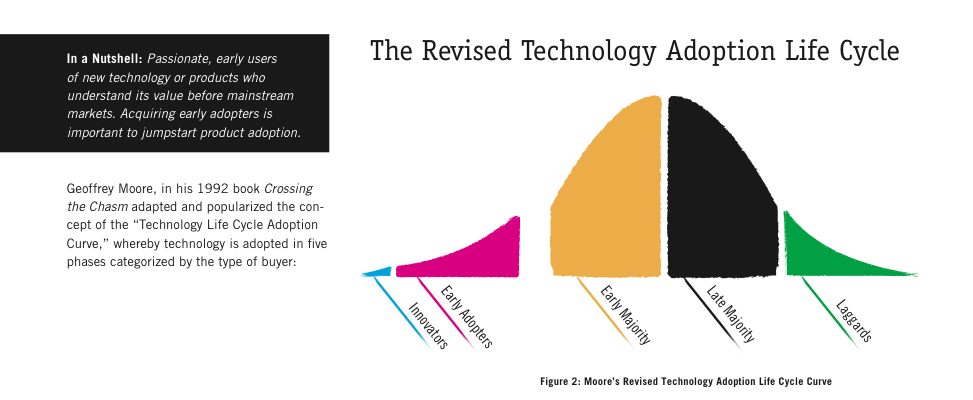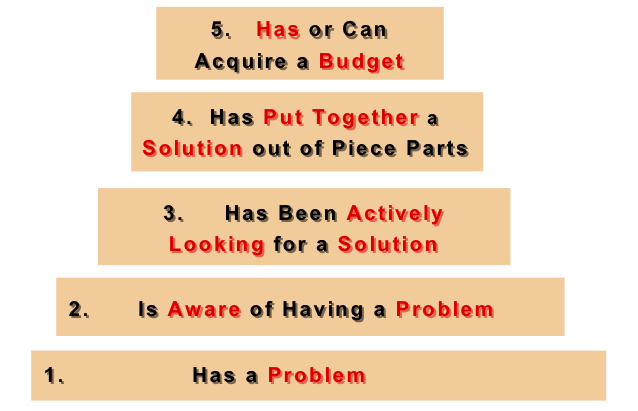Marketing for Entrepreneurs (Wed Dec 3, lecture 25)
Homework due for today
- Read: Rethinking Crossing the Chasm and Technology Adoption LifeCycle. Prepare for a discussion and cold calls.
- Read this interesting scenario: Company Founding Scenario. Deliverable: Post your response to the four questions.
The eRoom Story
- Story of eRoom’s entry into the market
- Pito and Jeffrey in 1995: Home delivery of groceries
- The importance of domain expertise
- The case we made to the VC about our competitive advantage: Internet + Desktop software + groupware
- How to position it? Groupware, Collaboration, Teamware: all were dirty words
- Customers (early adopters) really liked our value proposition
- “We are constantly reinventing the wheel”
- “there’s too much email”
- “we should be sharing better”
- “we are inefficient”
- How to sell: Download vs. Corporate sales team
- Direct sales: selling an alpha and beta test
- At first it went well but then it didn’t
- We needed to get more specific
- Go beyond “nice to have” to “must have”
- Vitamin vs. Aspirin
- What happened next
- Horizontal/Vertical/Horizontical
- The importance of real domain expertise
- Why vertical (IMHO) is easier place to start
- Exercise Look to your “extended” team: what do you know better than eanyone else?
Crossing the Chasm
- A concept that reminds us that the way we ‘approach’ a market changes depending on the maturity of the market
- From a a famous book: Crossing the Chasm, by Michael Moore, considered a seminal work.

- Key Lessons
- Realize where you are in the adoption cycle. Each stage calls for a different approach
- Realize that each stage gets information from fans in the previous stage so you need to really make sure
- They are fans
- They communicate with the next stage
- Growth can easily stall when going from Early Adopters to Early Majority
- Innovators and Early adopters (Earlyvangelists)
- Seek out new technology to solve their (or their companies’) problems, not just for the sake of owning the newest technology.
- Don’t rely on references from others to make buying decisions. While they are in- fluenced by other early adopters, their main concern is solving a known problem.
- Eric Ries and Steve Blank call Early Adopters “Earlyvangelists” to reflect that they are your biggest evangelists.
Earlyvangelist

Other reading
What is a ‘market’ in this context?
- How do you think about the market size?
- Look at segments, value proposition and market entry
- Segments: For your market or customer hypothesis, you need to understand the market(s) and segment(s) you are serving.
- Notice that these are not black and white, they can be continuums or multi-faceted.
- Types
- Mass Market: Huge and undifferentiated. Horizontal, e.g. consumers age 12 to 18.
- Niche: Highly specific: Vertical, e.g. Bicyclists
- Segmented: your product serves more than one segment. Apple serves the consumer and education market segments
- Diversified: your product serves very different markets: Amazon serves consumers and software developer
- Two or multi-sided markets: brings two or more segments together: dating services, newspapers
- there are others…
Value Proposition:
- For each segment you need to express what value your product or service is creating.
- If you cannot express it than you probably should not be trying to address that market.
- It’s not just that you are offering something ‘new’ to that segment. It could also be:
- cheaper (to buy or to use)
- faster
- more convenient
- better designed
- more customized
- brand
- safer/less risky
- more available (segment couldn’t get it, use it, access it before)
Market Entry
- Existing market
- Your customers (kind of) understand the problem and your solution
- You have (kind of) competitors
- Your customers will have to stop using another product
- Sometimes your entry can grow the number of customers, sometimes you fight it out (e.g. Facebook for Seniors. Is that a new or existing market?)
- So you can:
- ENTER an existing market, e.g. Android joining iPhone and compete directly
- RESEGMENT an existing market - with one of value propositions above, e.g. iPhone joining Blackberry
- RESEGMENT a market - by going after a sub-component of it, e.g. Tesla entering automobile market
- New Market
- Your customers may not know they have the problem
- You have to teach/explain them why your product/service exists
- They will have to find budget (money) to pay for it.
- This is a very expensive process for you
- So you can:
- CREATE a totally new market, e.g. Palm, creating the PDA market
- Discussion: Let’s see what advantages and challenges each example has
- Exercise:
- Company and market
- Barnes and Nobel Nook
- Tesla Motors
- Olin College
- Apple iTunes
- Raspberry Pi
- Nest Thermostat
- Microsoft X-Box
- Makerbot Replicator
- Google Android
- Pocket Hose (google it)
- 5 minutes: Team up in by classroom table, pick a different product, and answer:
- what market(s) is this company and/or product in
- what segment and kind of segment does it compete in
- what is it’s value proposition is it offering that market
- how did it attack or enter the market
- additional observations and/or insights?
- Company and market
- Report out by table